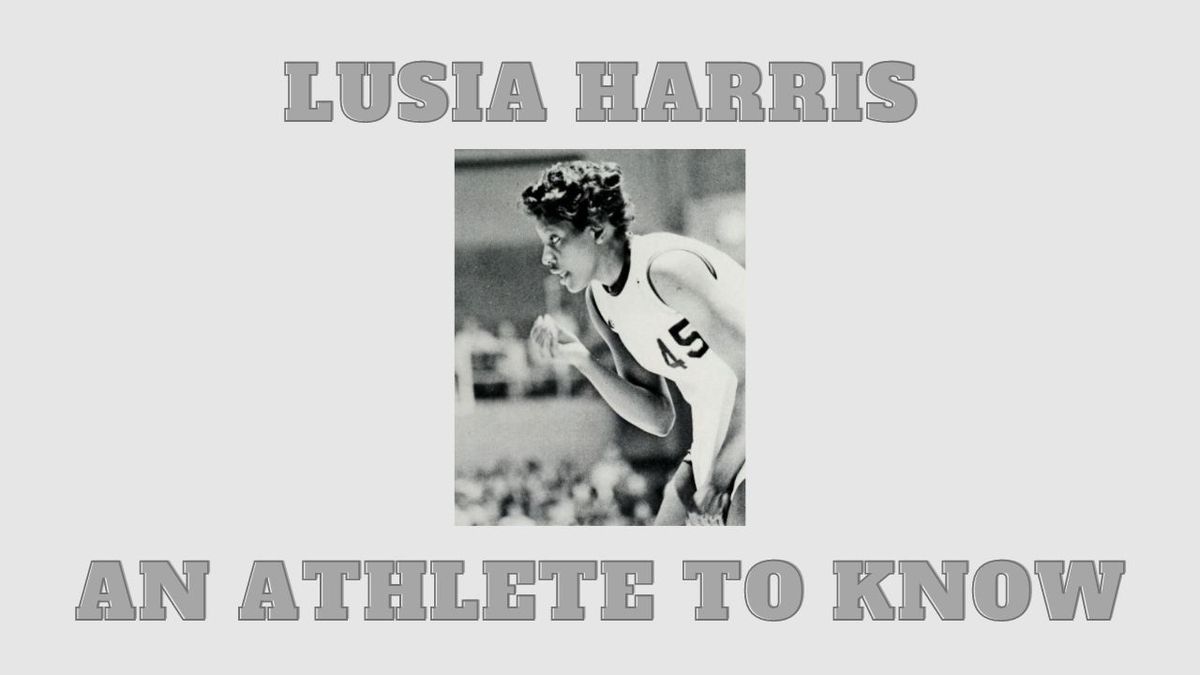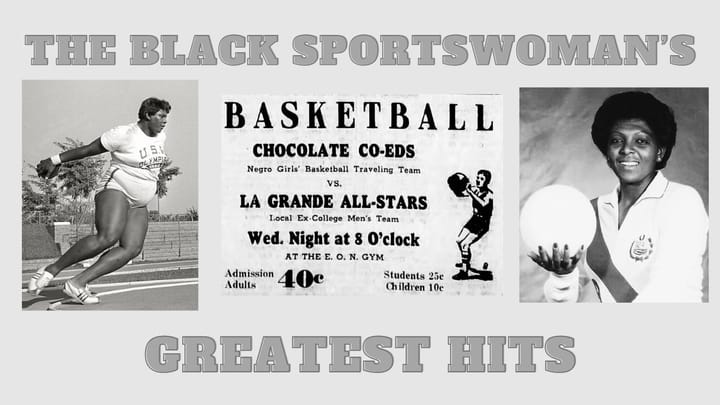The impact of Lusia Harris on Team USA
Lusia Harris led the way on the first U.S. Olympic women's basketball team.

Last week we highlighted Lusia Harris, but today I wanted to expand on her role with the U.S. women’s basketball team during the 1976 Olympics, the first Games that featured the sport.
Following her junior season at Delta State - where she averaged 31.2 points and 15.2 rebounds, a 61.9 shooting percentage and won a second national championship - she qualified for the 1976 Olympic team.
Regional tryouts were held around the country and Harris was one of the final 12, which included: Cindy Brogdon, Nancy Dunkle, Pat Head (Summitt), Charlotte Lewis, Nancy Lieberman, Gail Marquis, Ann Meyers (Drysdale), Mary Anne O’Connor, Patricia “Trish” Roberts, Sue Rojcewicz, and Juliene Simpson. Billie Jean Moore and Sue Gunter were the coaches and Gail Weldon and Jeanne Rowlands were the athletic trainer and manager, respectively. Roberts, Marquis, Lewis and Harris were the four Black players on that first Olympic team.
“At that level we were so excited to be a part of that very first team, we clicked so well off the court,” said Simpson, captain of that team. “So that when we got onto the court it was like we knew each other’s eye signals and nods and ‘hey I got (your) back here, don’t worry about it.’ I don’t think we ever (had to address racism or prejudice within the team),” she said, something she credited to the coaching staff.
How to support The Black Sportswoman
Ann Meyers Drysdale had first seen Harris play in person during the 1975 AIAW tournament and they won gold together during the 1975 Pan American games. But by the time the Olympics rolled around, Harris was the “premier center in the country.”
“Nobody’d seen a player like Lusia,” Drysdale told The Black Sportswoman. “Her strength, her size, her speed. Her quickness to get to the basket. Her ability to jump shoot. Just very difficult to defend.”
Harris used to sew her own clothes. She had a great laugh to listen to and “could give a very intimidating look, that made you feel like you messed up, so don’t do it again,” Drysdale said. Harris was also shy at the time and humble, even though she was the first Black women’s college basketball superstar.
While Delta State was almost upset by Federal City in overtime before going on to win that first title in 1975, most women’s college basketball powerhouses consisted mostly white players, nothing like the makeup of today’s game. At the time, many more Black women and girls participated in track and field than basketball and the scholarships for women college sports really hadn’t arrived yet.
In the transition to the national team, Harris went from playing for Margaret Wade and a talented Delta State team that walked the ball up the court to playing for Billie Moore and another talented team that played with an uptempo pace.
The biggest adjustment Lusia had to make was running.
“As a point guard, I’m running down the floor to kick it up and I’m like, “Where’s Luce?,” Simpson said. “She would say “Okay, here I come. And if I don’t get down there you guys can shoot, and I’ll just wait on this other end. And that just didn’t work for what our style was.”
Moore taught Harris to get ahead of the ball, and Simpson said that was an example of how coachable Harris was, which benefited the team during the Games.
The Olympics, specifically the opening ceremony, still stand out to Harris; it was the most people she’d ever seen in one place.
“We were marching in, and just seeing all the people in the stands. I thought that it was just unreal,” she said. “They were chanting, “U-S-A, U-S-A,” as we marched in. So everybody was just looking in the stands and trying to take pictures of all the people in the stands. And the people in the stands were trying to take pictures of us. It was just unreal.”
Going into the game, the United States team decided it wanted to score the first bucket of the Olympics. As you know, Harris was the first woman to score during an Olympic basketball game.
Across the games, Harris led the team in scoring and on the boards, averaging 15.2 points on a 63% shooting percentage and seven rebounds. She took and made the most free throws and added seven assists during the tournament. Team USA played in a round-robin of five games - six total teams played - and won Silver.
The U.S. didn’t play in the 1980 Olympics, but the U.S. women’s basketball team has won 8 golds and one bronze since that 1976 silver medal.
The foundation of sustained success that we’re used to seeing from USA women’s basketball began with that first Olympic team.And Lusia Harris led the way.
After the international hardware, she went on to win her third consecutive national title with Delta State. She was Mississippi’s first All-American women’s basketball player.
“Just the fact that we got any recognition in the days of the ‘70s by local media, and that you have some articles to read, we’re grateful. But it’s like, c’mon,” Drysdale said. “What Lusia Harris did for not only the college of Delta State, but the state of Mississippi. If they had only, only had paid attention.”



Comments ()